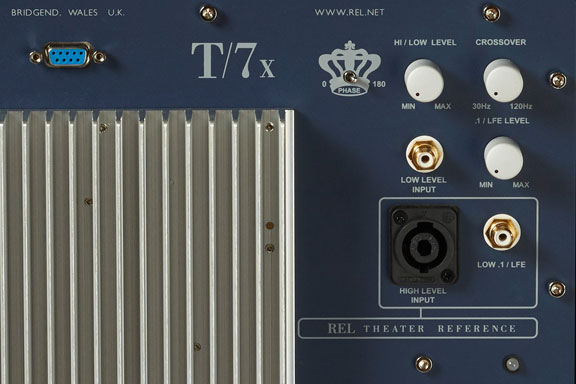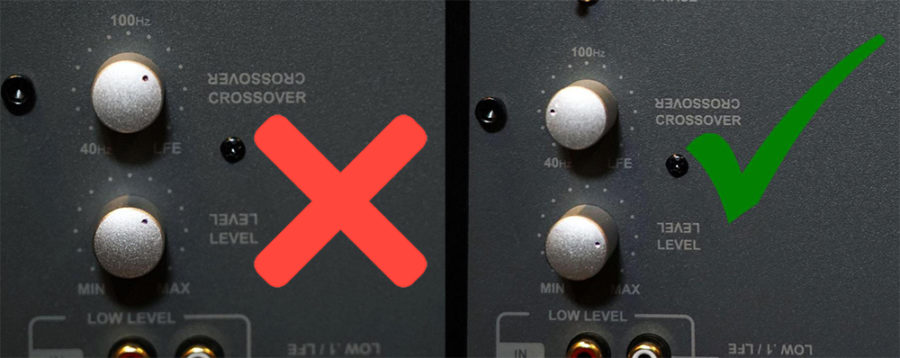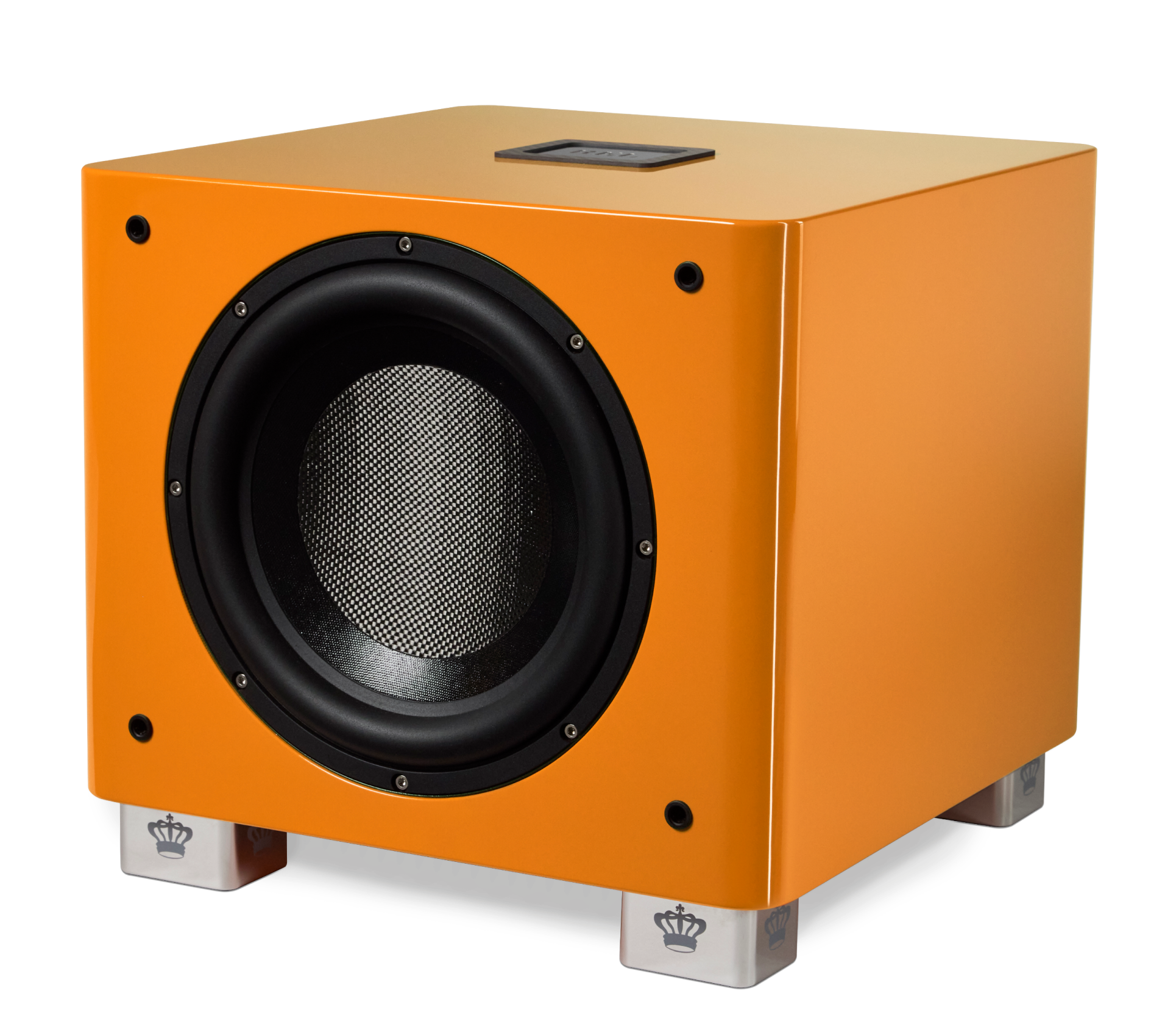Blog
How to Set Crossover and Gain on a Subwoofer
Fixing Common Subwoofer Tuning Mistakes
Updated January 24th, 2022

So you’ve gotten your new REL home, plugged it in and it’s working. How do you know if you’re doing it right? Stay right here, we’ll walk you through a few misconceptions and get your system up and running at an altogether higher level.
While this is intended for classic RELs (aka those that feature our High Level connection) the principles apply to all RELs as do the reference setup tracks we use. There’s a link to the 2 setup cuts needed to go through your audio life at the end of this blog.
Steps For Setting Crossover and Gain on your REL Subwoofer.
Before we get started, your subwoofer should already be plugged in and operational. Once you’re up and running, take a look at the rear panel of your subwoofer. There are three simple controls for a music system (and four simple controls if one is using the system for both movie and music):
Subwoofer Controls
- High/Low Level Gain: The volume control.
- Crossover: Frequency at which the subwoofer blends with the speakers.
- Phase: Can be set to 0 or 180 to control driver polarity so all speakers are working in sync. Whichever position results in the loudest and fullest bass, is the correct setting.
- .1/LFE Level for REL Reference Theater: .1 channel volume control.
This brief tutorial deals with setting Gain (High or Low Level Volume) and with Crossover. We’ll cover phase in a separate blog in just a few days.

ProTip
Almost 100% of the time, newcomers will set the crossover too high and the gain (volume level) too low. This will result in a sound that is fatter, boomier and improperly integrated with the main speakers. The secret is to realize the crossover needs to be lower than the main speaker’s output at which point the gain can be significantly higher resulting in very flat, natural and extended deep bass.
Audio Mythology
“You shouldn’t hear a good subwoofer if it’s in the system.” This saying is almost right. What experts mean when they say that is that one shouldn’t hear a boomy, overly rich sound quality stepping all over music or movies. What gets lost in that saying is that while one shouldn’t hear the objectionable parts of merely adequate subwoofers—those generally intended for movie-only application. But when one takes a really finely tuned subwoofer like ours out of the properly tuned system, the system should sound utterly and completely broken. As in, “Holy ****, plug that thing back in, my system’s broken.” Having worked side-by-side in numerous high end reviewer’s systems, those very words have been uttered by some of the bluest of blue bloods so you’re in good company.
Subwoofer Gain
Think of this as a volume control for your REL. Its purpose is rather more single-minded than simply being a “dumb” volume control. Its true purpose is to carefully set the RELs output to precisely match that of your main speakers. As such, learning how to adjust this is a critical adjustment.
Setting Gain on A Subwoofer
Before you begin, set the crossover control to its lowest setting, we’ll come back to it in a few minutes. Second, just let it play for 20 minutes or so at moderate volume and let the power supply begin to charge itself. During this time, your REL will become noticeably louder.

We have used track #4 on the cd soundtrack to the movie Sneakers for 25 years and it remains simply the finest setup cut known.
- Step 1: Using Sneakers (cut 4), with your system playing medium loud, bring the High/Low Level control up until the REL begins to be noticeably too loud.
- Step 2: Hop into your primary listening seat to verify this as it can sound very loud at the REL’s location but not out in the room. At this point, it should just begin to sound like bad car stereo, where the bass takes precedence over everything.
- Step 3: Now back off the gain a click at a time. Likely, you’ll only need to drop it a click or two to restore a natural balance.
Now pause and we’ll move over to the crossover.
Subwoofer Crossover
Crossover control on a subwoofer sets the frequency at which your subwoofer acoustically drops off in volume. Above this frequency, your REL subwoofer will begin rolling off in output to blend with the main speakers, which is a critical aspect to obtaining perfect system blend.
Setting Crossover on A Subwoofer
- Begin bringing this control up (clockwise) a click at a time until it becomes noticeably too boomy.
- As it does so, reduce the Gain control a click and see if everything rebalances. If it does, keep turning up the crossover until it booms again (a click or two) and again reduce the gain by a click or so.
- Don’t be surprised if the first few clicks don’t result in too much of a shift, but by about 11-16 clicks up, you should notice it sounding too fat. Good, this means that you’re hearing things correctly.
Fine Tuning Crossover and Gain on your Subwoofer
There is an inverse relationship between Gain and Crossover. This means that the higher in frequency (clicks to the right) you turn up the crossover, the lower you will need to set the Gain control. Conversely, setting the Crossover too high means you will need to reduce the High/Low Level Gain control. This is where folks start to run into problems.
How do I know what the ideal sound is?
It’s easier than it sounds; bring the crossover up to a point that a slightly mechanical, hard quality drops out of your system and STOP. This means you’ve managed to “connect” your speakers with your REL. Going farther will result in more loudness, but at the expense of heaviness, a sort of plum-iness sets in. Things like a baritone male voice will start to sound too thick and rich and speech clarity will begin to be affected. Conversely, reducing the crossover by two or three clicks will instantly restore the hard-edged sound to the middle ranges of music and make things sound colder and drier.
Move slowly, a click down on crossover may be all that is required. For speakers of average efficiency and decent output into the 50-60 Hz range, final settings of High/Low Level typically come in at around 11-16 clicks up and Crossover in the area of 10-15 clicks are common. Some rooms have acoustic issues and may require higher Gain settings while speakers with much deeper bass output than average may require lower Crossover settings than this. Rarely will the Crossover setting greatly exceed 15-16 clicks up. We provide these as a kind of rough estimate of the ranges we generally see when working in the field and dialing in RELs.
Learn More About the Principles of Sound
In our next blog, we’ll be tackling phase which is simple until it’s not. Check out our phase article here, for the next best steps for setting up your REL Subwoofer to perfection. We’ll do our best to make sure it stays on the simple side of things.











